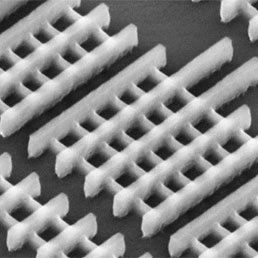ROME - A new three-dimensional structure for semiconductors, to increase the performance of microprocessors, optimizing energy consumption. This announcement from Intel, which will shortly put into production the new transistors per chip to 22 nanometers. The new Intel technologies are therefore the first transistor to the 3D world, called Tri-gate, a radical departure from the two-dimensional planar structure on which they are based, for several decades, not only all the computers, mobile phones and consumer electronic devices.
But even the electronic controls available in cars, airplanes, appliances, medical devices and many other everyday devices. The first chip available in large quantities to use 3D tri-gate transistor is called code-named "Ivy Bridge", ready to go into production in large quantities. A transistor is a microscopic element of basic electronics consimo.
The invention of the transistor in silicon dates back more than 50 years ago, and the design of 3D transistor has been announced for the first time by Intel in 2002. The technology will be made with 22 nanometer manufacturing process, where a nanometer is a billionth of a meter. Paul Otellini, Intel president and CEO, said about the new transistors, "Intel researchers and engineers have once again reinvented the transistor, this time using the third dimension.
With this potential will create great devices that can change the world. "With this new technology, the chips operate at a lower voltage and less leakage of electricity. The result, according to Intel, is measured in terms of performance and more energy efficient than previous transistors.
Potentiality that offer designers the flexibility to choose transistors intended for high performance or low, depending on the application implemented. Faced with the same performance as available in 2D planar transistor chip to 32 nm, In fact, the new transistors consume less than half the energy.
When will we see. The 3D tri-gate transistor will be implemented in the next manufacturing process from Intel, the so-called node to 22 nm, in reference to the size of the individual characteristics of the transistor. Intel Core-based Ivy Bridge will be the first chip consumer, desktop and notebook computers, they will use the 3D tri-gate transistor.
Ivy Bridge technology should be ready for commercial production by year end . Even for netbooks, smartphones and Tablet PCs. The new technology will also offer products based on Intel Atom more integrated and touched the end of the market more attractive in recent times, the hi-tech ultra-portable.
So smartphone tablet, more and more mass produced. 


But even the electronic controls available in cars, airplanes, appliances, medical devices and many other everyday devices. The first chip available in large quantities to use 3D tri-gate transistor is called code-named "Ivy Bridge", ready to go into production in large quantities. A transistor is a microscopic element of basic electronics consimo.
The invention of the transistor in silicon dates back more than 50 years ago, and the design of 3D transistor has been announced for the first time by Intel in 2002. The technology will be made with 22 nanometer manufacturing process, where a nanometer is a billionth of a meter. Paul Otellini, Intel president and CEO, said about the new transistors, "Intel researchers and engineers have once again reinvented the transistor, this time using the third dimension.
With this potential will create great devices that can change the world. "With this new technology, the chips operate at a lower voltage and less leakage of electricity. The result, according to Intel, is measured in terms of performance and more energy efficient than previous transistors.
Potentiality that offer designers the flexibility to choose transistors intended for high performance or low, depending on the application implemented. Faced with the same performance as available in 2D planar transistor chip to 32 nm, In fact, the new transistors consume less than half the energy.
When will we see. The 3D tri-gate transistor will be implemented in the next manufacturing process from Intel, the so-called node to 22 nm, in reference to the size of the individual characteristics of the transistor. Intel Core-based Ivy Bridge will be the first chip consumer, desktop and notebook computers, they will use the 3D tri-gate transistor.
Ivy Bridge technology should be ready for commercial production by year end . Even for netbooks, smartphones and Tablet PCs. The new technology will also offer products based on Intel Atom more integrated and touched the end of the market more attractive in recent times, the hi-tech ultra-portable.
So smartphone tablet, more and more mass produced.



- Intel Busts Out of the Gate With 3D Transistor (05/05/2011)
- Intel video explains revolutionary Tri-Gate 3D transistors (04/05/2011)
- Intel's 3D Transistors Promise Small Physical And Electrical Footprint (04/05/2011)
- Intel Announces Revolutionary 3D Transistors, 50%+ More Energy Efficient Than Previous Generation (04/05/2011)
- Intel Designs Faster, 3D Transistor (04/05/2011)
No comments:
Post a Comment